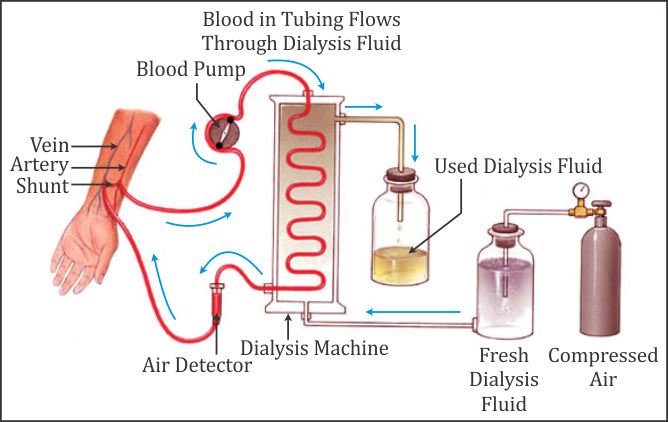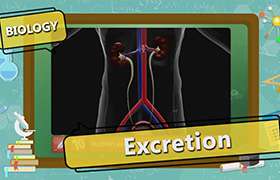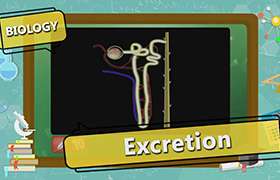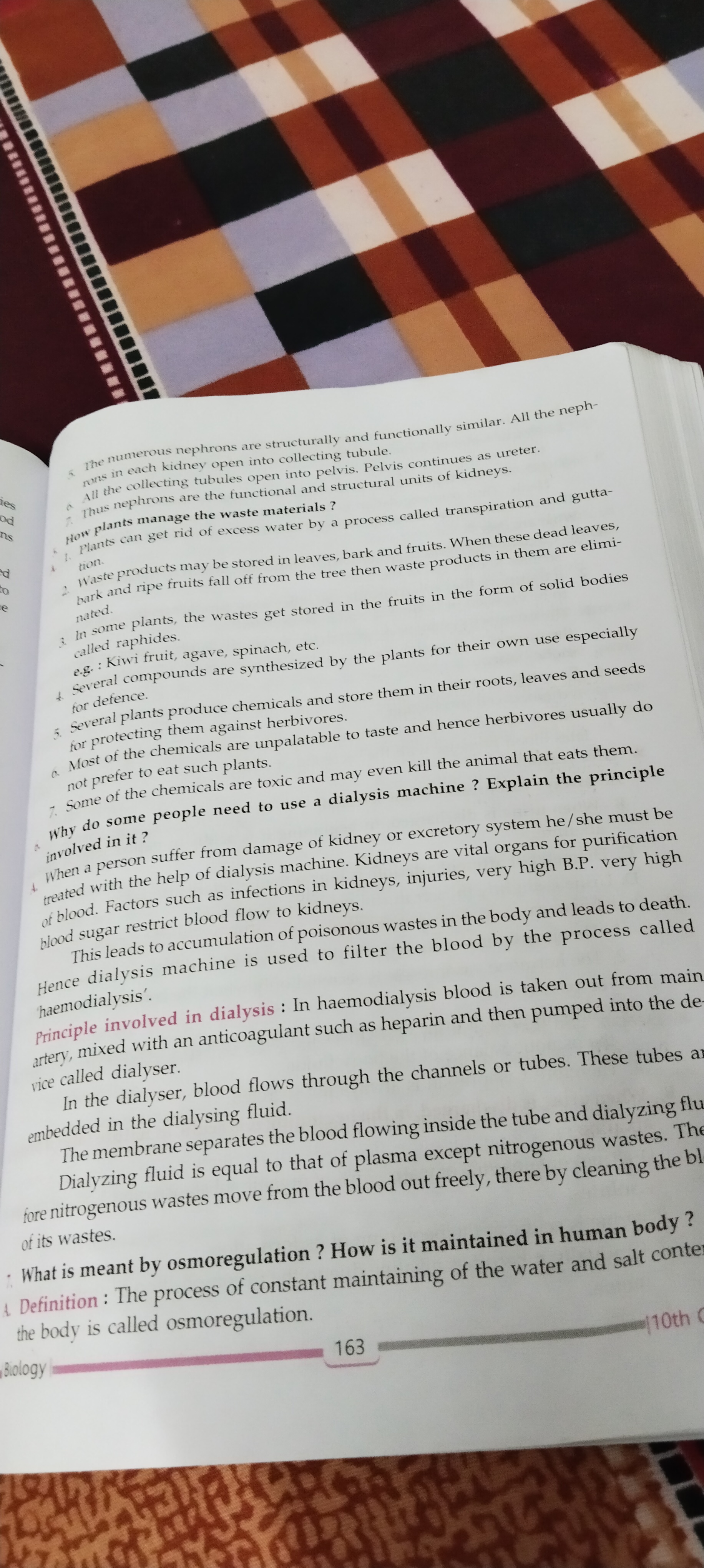CBSE Class 10 Answered
Explain the concept and mechanism of dialysis.
Asked by manya.bhardwaj.01 | 19 Jun, 2017, 04:09: PM
Concept of Dialysis:
- If one kidney is damaged or removed, then the other kidney alone can fulfil excretory needs.
- However, the failure of both the kidneys allows urea and other wastes to accumulate in the blood.
- Such a patient undergoes dialysis.
- In dialysis, an artificial kidney is used.

Mechanism of Dialysis:
- The artificial kidney contains tubes made of cellophane with a semi-permeable lining.
- These tubes are suspended in a tank filled with a dialysing solution.
- This fluid contains water and glucose in concentrations similar to those in blood.
- The patient’s blood is led from the radial artery and cooled at 0°C.
- Then anticoagulant heparin is added to the blood.
- Blood is then passed through semi-permeable coiled cellophane tubes.
- The tubes allow small molecules such as urea, creatinine, uric acid to pass out.
- Also metabolic wastes are filtered out in the surrounding solution.
- But the macromolecules such as proteins are retained in the blood.
- Purified blood is then mixed with antiheparin and warmed to the body temperature.
- The purified blood is returned through a vein in the same arm.
- The function of dialysis is similar to the function of the kidney, but the only difference is there is no reabsorption during dialysis.
Answered by Sheetal Kolte | 19 Jun, 2017, 07:06: PM
Application Videos
Concept Videos
CBSE 10 - Biology
Asked by kunchalasrinivasaraosrinivasar | 23 Apr, 2024, 07:40: PM
CBSE 10 - Biology
Asked by sarmabankupalli9 | 02 Jan, 2024, 08:19: PM
CBSE 10 - Biology
Asked by pavanimullu123 | 26 Dec, 2023, 07:17: PM
CBSE 10 - Biology
Asked by 09.10bjanvhijadhav | 16 Sep, 2023, 11:58: PM
CBSE 10 - Biology
Asked by krishnaagrawal79 | 19 Jul, 2023, 05:07: PM
CBSE 10 - Biology
Asked by arghadeeproy2 | 18 Jun, 2023, 06:07: PM
CBSE 10 - Biology
Asked by diyapandey.sah | 16 Apr, 2023, 01:57: PM
CBSE 10 - Biology
Asked by sagarmishra | 04 Mar, 2023, 02:41: PM
CBSE 10 - Biology
Asked by gandepallivarahalababu | 27 Dec, 2022, 07:39: PM
CBSE 10 - Biology
Asked by gandepallivarahalababu | 27 Dec, 2022, 07:37: PM








